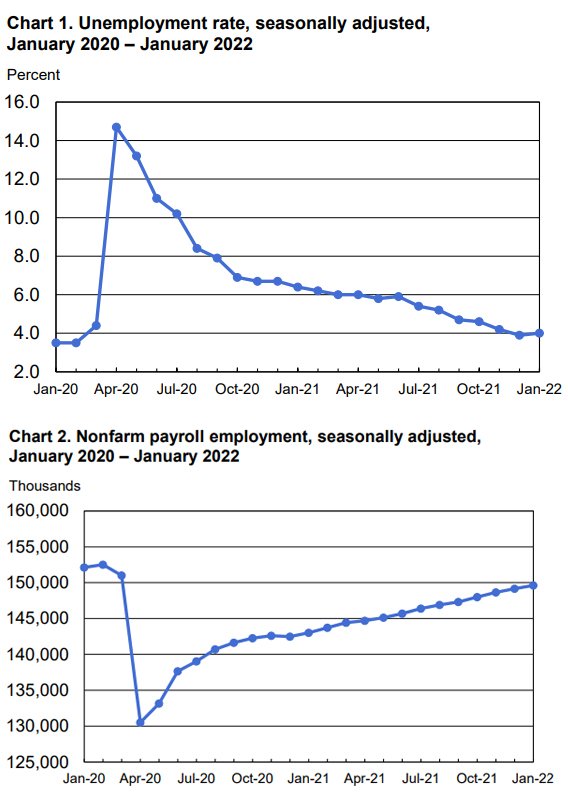Employment Summary for May 2022
/The U.S. Bureau of Labor Statistics (BLS) reported the economy added 390,000 jobs in May — roughly in-line with analysts’ expectations.
Unemployment remained unchanged for the third consecutive month at 3.6 percent. Among the college-educated civilian workforce, the primary target of the MRINetwork’s recruitment efforts, the unemployment rate remained at a near record low of 2.0 percent.
The labor force participation rate was little changed at 62.3 percent. However, it is 1.1 percent below the February 2020 level.
Employed persons who reported some teleworking during the month declined to 7.4 percent, down from 7.7 percent in April. This rate is about 50 percent lower versus the peak recorded during the middle of the Covid period.
“Today’s BLS report continues to signal a robust jobs market, but all of us are aware of the underlying economic realities that will challenge both top performers and innovative firms throughout this next phase in the business cycle.
Two weeks ago, I had the opportunity to meet with and address over 400 of my colleagues in the MRINetwork. These are all hard-charging talent advisors and recruitment experts to firms and talented performers in virtually every sector of the global economy. They are also managers of their own thriving businesses,” said Bert Miller, President and CEO of MRI, one of the world’s leading search and recruitment organizations.
“My remarks were focused on the need for both their own and their clients’ organizations to be a ‘destination’ for talented, executive, technical, managerial, and professional performers. I reminded the team that what we enable as managers becomes part of an organization’s culture. That which we enable must align with our core values. I noted that building teams that will lead us through this dynamic business cycle might require less emphasis on industry-specific experience and more on talent who will hustle, people who attack each day with urgency versus those who are merely adept at checking off tasks. I also commented that, ‘winning talent today is more competitive than ever’ is not news. What is news is the need to level-set an organization’s culture, values and purpose as the economy may enter a new more challenging phase.”
Wall Street Journal reporter David Harrison provided a broad overview of today’s report. “The job market is coming off an exceptional stretch in which demand vastly exceeded the supply of available workers. Employers added more than 400,000 jobs a month for 12 consecutive months, the longest period of such strong employment growth in records dating back to 1939. Competition for workers amid a severe labor shortage has driven up annual wage increases above 5% every month of this year. By contrast, wage gains averaged 3.2% in the 12 months to February 2020,” noted Harrison.
"This does not look like a labor market about to tip into recession," said Daniel Zhao, senior Glassdoor economist. "Job gains were healthier than expected and the labor force participation rate ticked up. Despite concerns about a slowdown and even a recession, the labor market’s fundamentals look healthy."
Moderate job growth was seen across many industry sectors.
Employment in leisure and hospitality increased by 84,000 in May, as job growth continued in food services and drinking places (+46,000) and accommodation (+21,000).
Employment in professional and business services rose by 75,000 in May. Within the industry, job gains occurred in accounting and bookkeeping services (+16,000), computer systems design and related services (+13,000), and scientific research and development services (+6,000).
In May, transportation and warehousing added 47,000 jobs. Employment rose in warehousing and storage (+18,000), truck transportation (+13,000), and air transportation (+6,000).
Employment in construction increased by 36,000 in May, following no change in April with most gains in specialty trade contractors.
Employment in healthcare rose by 28,000 in May and manufacturing employment continued to trend up in May (+18,000). Modest gains were also seen in wholesale trade and mining.
In May, employment showed little change in other major industries, including information, financial activities, and other services.
Perhaps reflecting continuing supply chain challenges, employment in retail trade declined by 61,000 in May. However, that is 159,000 above its pre-Covid February 2020 level.
“The next several months are projecting to deliver challenges to growth and profitability in many industry sectors. Level-set your organization. Be sure business and hiring decisions are aligned with your firm’s culture and values. Look beyond the horizon and be prepared to leave your comfort zone as you concentrate on strategies that reflect a new business reality,” noted Miller.
The Trevi Group | “Executive Search for Technology Professionals” | www.TheTreviGroup.com
#thetrevigroup







































































